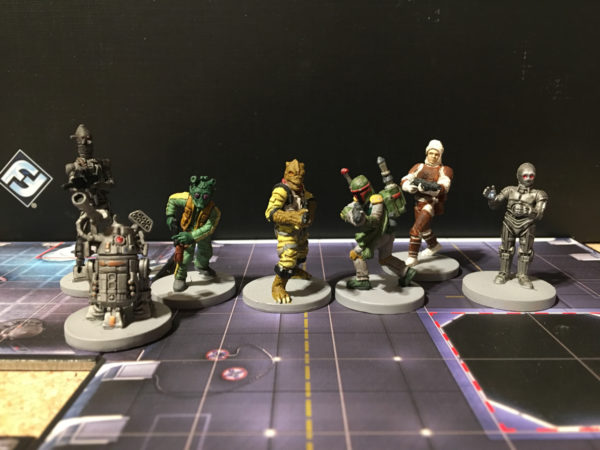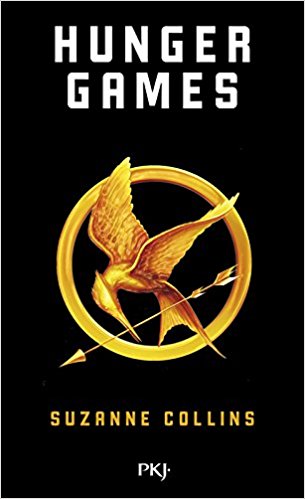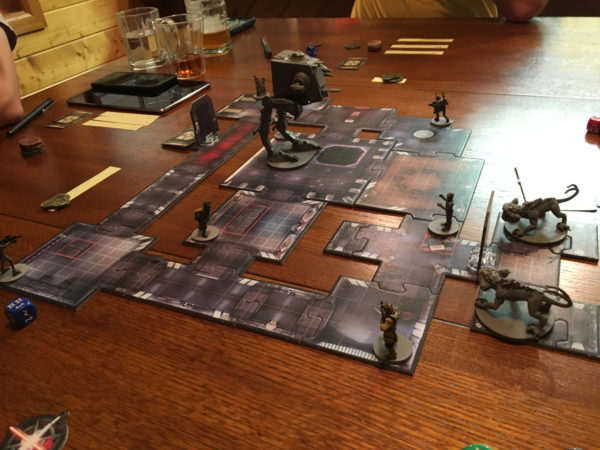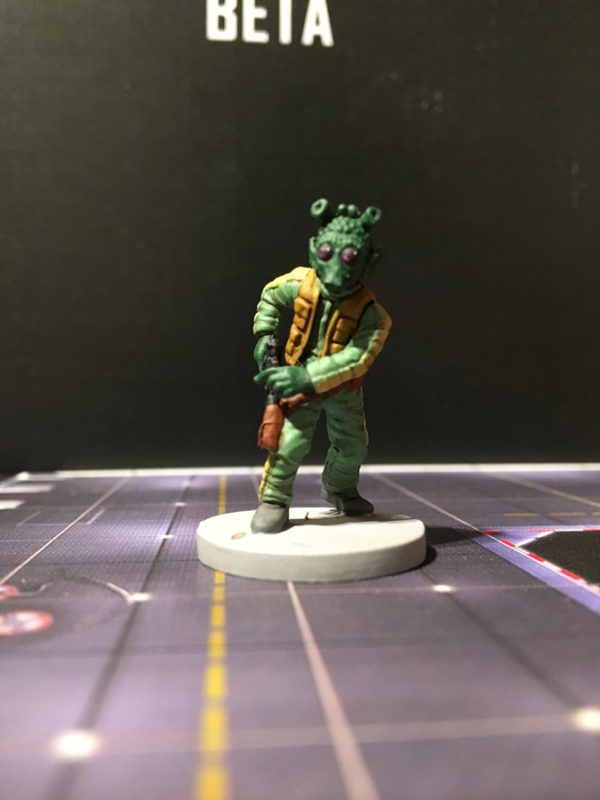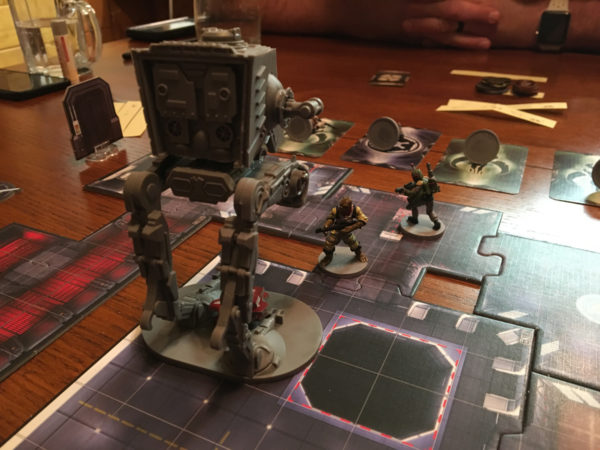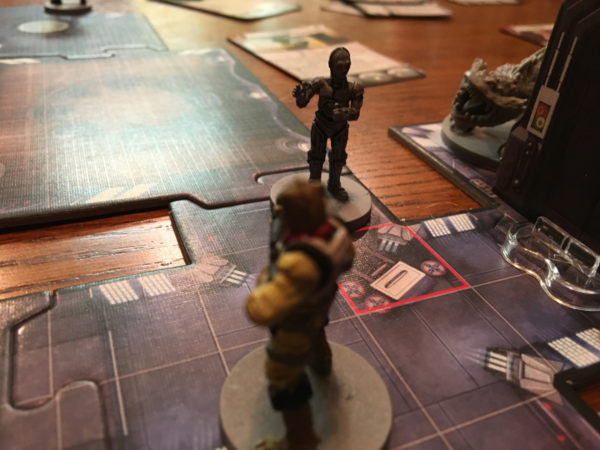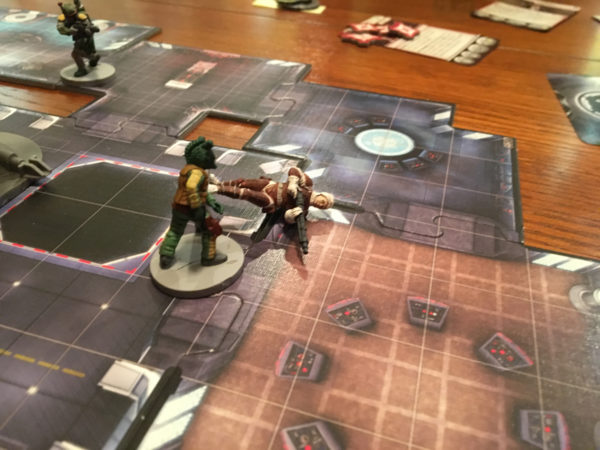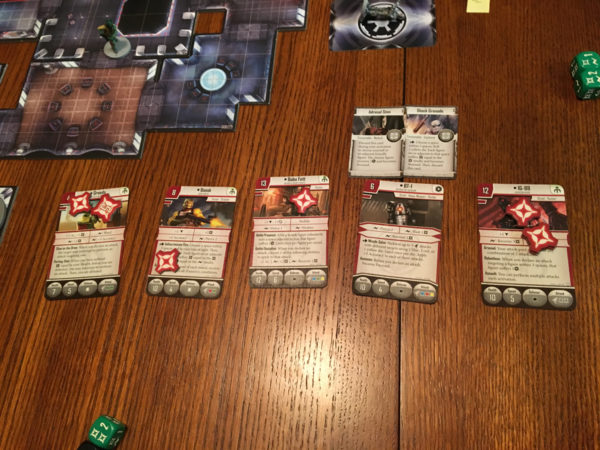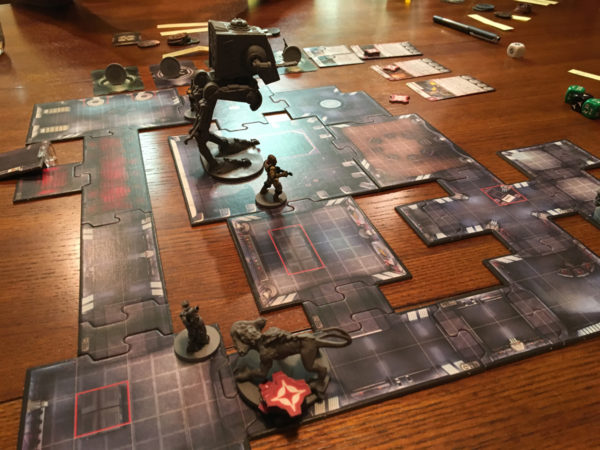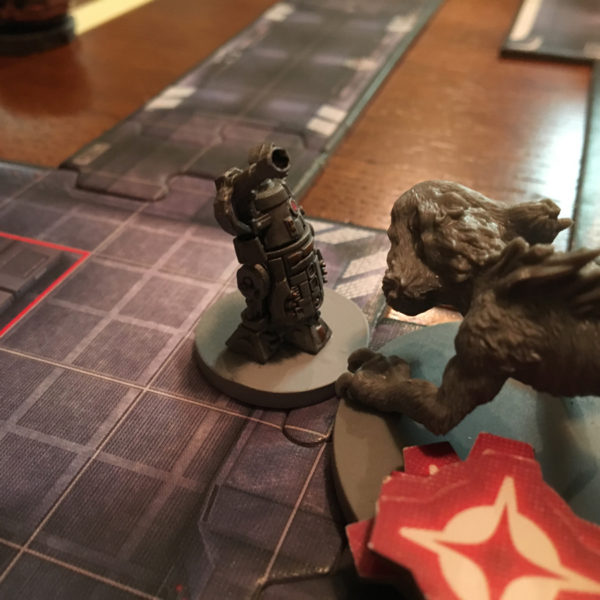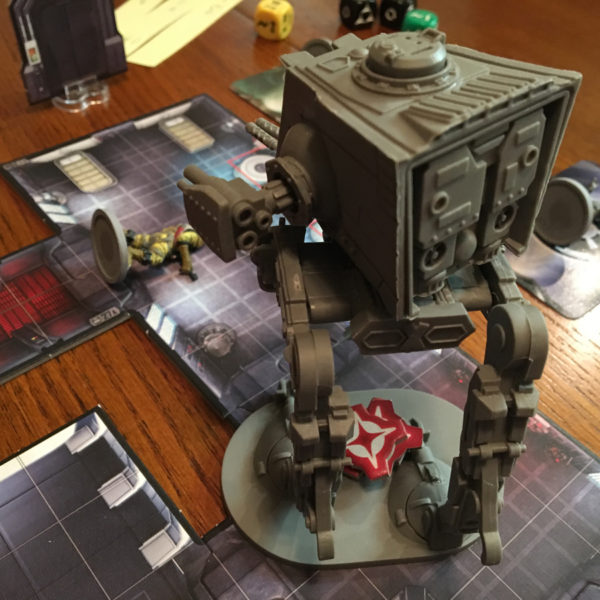I’ve talked a little about the prep of my Imperial Assault Hunger Games variant in both concept and execution but I wanted to take a minute to go over the full variant as we played it and how you can duplicate it if you want.
There have been several Hunger Games variants floating around for games like Imperial Assault and they all center around a central basic idea: multiple players deathmatch on a fixed board with each player controlling a single model until the game whittles down to the last figure standing. To simulate more of the Hunger Game’s theme, a cache of goodies lie at the center of map for players to pick up and use throughout the game. A lot of these matches like to break the game’s fundamental rules in some way by offering the ability to pick new items/powers/weapons regardless of whether the figure can legally use it. They also work best with a lot of players in the game to maximize the board and ramp up the chaos factor.
I’ve always liked the idea of this free-for-all deathmatch and the Hunger Games element of being able to upgrade your figure has always been appealing as it means you can have a normally inferior character and still win out by grabbing a great item or two. One thing that limits the experience to conventions or large game gatherings is the requirement for lots of players. Free-for-alls really work best if they are at least 4+ players and really come into their own (depending on the complexity of the rules) when dealing with 8-20 players. More than that and you get a game that goes on too long or doesn’t have enough initial table space to be comfortable.
In planning out my Hunger Games variant, I was looking to eliminate the need for large groups. Large groups can still work in my variant but it won’t be totally dependent on it. What that means is I still wanted a large field of figures on the board but that number would need to be fixed regardless of play count. The solution to this came when I discovered an old horse-racing game by Reiner Knizia, called Winner’s Circle (originally known as “Turf Horse Racing” and “Royal Turf”).
/pic3159401.jpg)
In Winner’s Circle, players play 3 races with seven horses on the track. Each player bets on the horse they think will win then starts the race. The main trick to making this game work is that no one player controls a specific horse so when a player’s turn comes up, they get assigned a random horse (or choice of horses) and must move it. A horse can’t be chosen twice until all the other horse have had a chance to go and round and round the play continues until one horse crosses the finish line. Players have made their bets in secret and so might find themselves co-operating with some players trying to jockey their shared favorite to the lead or thwart a rival’s horse from taking the victory. This concept became the key to my Imperial Assault Hunger Games variant.
I must admit that I’ve never played (and don’t own) Winner’s Circle. I would like to but the game is out of print and even though a new printing came up just last year, I haven’t really seen an easy way to get a hold of a copy. This didn’t really matter to me because the concept was all I needed and I would need to tailor the specifics to Imperial Assault itself.
For this variant, much like Winner’s Circle, you play as a wealthy observer betting on the outcomes of the Imperial Assault Hunger Games. Players start with a per-determined amount of money and will bet on the outcome of each round of play. Starting with seven figures of varying strength, each round will run until at least two figures are eliminated. Then the round will end, bets will be paid out or lost depending on the results, and the next round will commence until two more figures are eliminated and the final round can begin with, ideally, three figures remaining.
The exact figure count can be adjusted but realize that more than seven models on the board will mean longer rounds and a longer game. The goal is for each round to remove enough figures to make sure there is some risk in the player’s bets and also leave enough figures in play for the final round for there to be some choice in the final betting.
During the course of each round, the players will secretly place their bet for the round on what figure they think will survive the round. In the first round, their bets are usually low risk since five of the first seven should survive. The players will need to use their starting money to place all bets and this money is always the maximum they can ever bet in a round, regardless of their future winnings. If, at the end of the round, their bet failed, they will lose that amount from their starting pool and will affect their maximum betting amount for the future.
After the players pace their bets, the starting player will draw an activation card and activate the model according to the standard Imperial Assault Skirmish rules. The figure can move and shoot anyone they want (except the figure itself) but if they can attack someone, they must do so. Figures may never double move so if they have not attacked before they end their movement, they must do so after if they can. This will help keep the game from dragging on. To set up this activation deck, we took slips of paper and put two slips in for each character and added four wilds for flexibility. As characters are eliminated, their slips are removed from the deck or discarded as drawn.
Since not all characters are equal, they are rated in groups to showcase obvious bets versus the “longshots.” I did this simply by grouping the characters in based on their point values. Since I was going with a bounty hunter theme, I had the following spread:
- Boba Fett (13 points)
- IG-88 (12 points)
- Bossk (8 points)
- Dengar (7 points)
- BT-1 (6 points)
- 0-0-0 (4 points)
- Greedo (4 points)
The Green group was your elite group and so they held a 1:1 pay out- you get paid what you put in. Bossk and Dengar held the middle and so we set them to a 2:1 payout and BT-1, 0-0-0, and Greedo held up the rear with a 3:1 payout. I’d never played with most of these figures so going by points was the easiest way to group them in payouts. Though we didn’t in our game, you could adjust the payouts after each round based on current health or other factors. If Boba Fett got decimated in the round before and BT-1 was still at full health, moving the payouts up or down can help keep things interesting. This is best if you are running the game and not participating as you can be more impartial.
The last few additions to the variant is the idea of player sponsorship and environmental affects. For player sponsorship, every player receives a skirmish card that can be used on the figure they are activating during their turn. These skirmish cards should be pulled in advance to make sure they are relevant so remove those cards dealing with initiative or activation orders, etc. Players can also buy more cards to sponsor the figure they are activating and there is no limit to the number of cards being used in a single turn. Many of these cards require the figure to spend an action so there is a practical limit to the cards during the game. Each cards costs one from their betting supply so spending money on the card can affect future bidding potential.
In a way to spice up the battlefield, we added a few neutral figures into the mix. A player had to activate one of the neutral figures on the map at the end of their turn and that figure had to move to the nearest figure and attack it if able. These elements were introduced slowly through the game so at the start of round two, we had two Nexu come onto the board and round three saw an AT-ST patrol the halls. Lastly, we did have a weapons cache behind a door on the side of the map that featured 3 random skirmish cards for the first figure to open the door and enter the room.
So with the game concept and general mechanics outlined, we set up the board and randomly placed figures on the map. Round one started with most players betting conservatively, mostly 10-15 credits out of their 30 total. With the bets locked in, the game started out.
First turn, Bossk activated and annihilated 0-0-0 on a lucky roll. I hope no one just lost a ton of money!
BT-1 had ran over to the supply closet and picked up a bunch of nice cards, one of which was a sneaky card that eliminated the target’s defense die if they didn’t start in line of sight at the beginning of BT-1’s activation. He promptly ran over and blasted his missile barrage at IG-88 and Bossk doing a healthy amount of damage each.
But it was little Greedo that got the second kill in to end round one when he wiped out poor Dengar (after a smack down from Boba Fett). Round one ended and everyone made their bets with a few of us getting a healthy payout from BT-1’s exploits. Players made their bets again and we started round two.
BT-1 was the only one untouched after the first round so he became a clear favorite. Greedo had one life left so was clearly the worst choice.
IG-88 pot shots Greedo and ends up taking a maximum damage shot on his dying power.
The Nexu were released and causing havoc but Bossk gets his second kill of the game to take down IG-88, ending round two.
I doubled down on BT-1 but so did a lot of others to make for a pretty sweet payoff for most of the players. Round three was about to begin with two Nexu running around (one currently starting it’s munch down on BT-1) and the massive AT-ST starting up right next to the other two survivors Bossk and Boba Fett. Players put their bets down and away we went.
The Nexu started munching on BT-1 but he gave much more than he got and it looked like my “safe bet” with Bossk was misplaced and I should have went with BT-1 for the third time.
Bossk and Boba Fett then started having repeated activations and it started to become clear which players bet on which characters. Both started taking heavy fire and were getting whittled down while BT-1 had some critical shots to take down the Nexu but that white die decided to get funky and blocked the shots.
Boba Fett tried a shot to take down Bossk but his white die pulled an evade and kept him alive another turn to double tap the Fett.
The Nexu continued its assault on BT-1 and was now looking like it could be the clear victor.
But in a final activation, it failed to take down the Nexu and then the player activated the AT-ST and Bossk’s white die finally failed him.
BT-1, murderbot extraordinaire, takes the victory and is the sole survivor of the first Imperial Assault Hunger Games!
Much to everyone’s surprise, no one bet on him, preferring to bet on the safer bets of Boba Fett and Bossk. Once the alliances started, it was all down hill for those two as the action remained heavy on that side of the board. The total payouts and remaining credits were tallied and Sterling took the win. I decided to place a small bet and maybe win out with my earlier winnings but I didn’t conserve enough and ended up a close third place.

